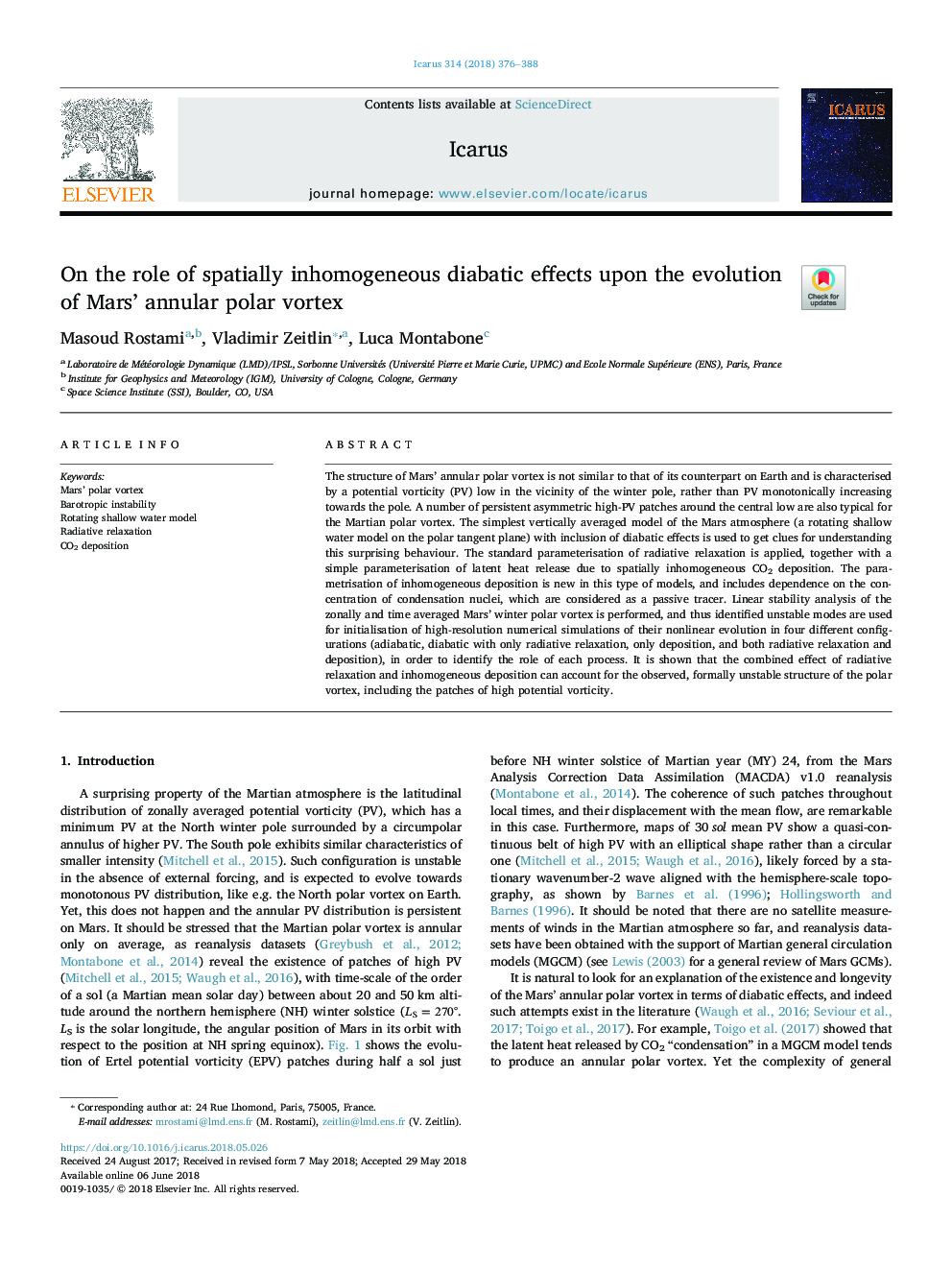| Article ID | Journal | Published Year | Pages | File Type |
|---|---|---|---|---|
| 8133893 | Icarus | 2018 | 13 Pages |
Abstract
The structure of Mars' annular polar vortex is not similar to that of its counterpart on Earth and is characterised by a potential vorticity (PV) low in the vicinity of the winter pole, rather than PV monotonically increasing towards the pole. A number of persistent asymmetric high-PV patches around the central low are also typical for the Martian polar vortex. The simplest vertically averaged model of the Mars atmosphere (a rotating shallow water model on the polar tangent plane) with inclusion of diabatic effects is used to get clues for understanding this surprising behaviour. The standard parameterisation of radiative relaxation is applied, together with a simple parameterisation of latent heat release due to spatially inhomogeneous CO2 deposition. The parametrisation of inhomogeneous deposition is new in this type of models, and includes dependence on the concentration of condensation nuclei, which are considered as a passive tracer. Linear stability analysis of the zonally and time averaged Mars' winter polar vortex is performed, and thus identified unstable modes are used for initialisation of high-resolution numerical simulations of their nonlinear evolution in four different configurations (adiabatic, diabatic with only radiative relaxation, only deposition, and both radiative relaxation and deposition), in order to identify the role of each process. It is shown that the combined effect of radiative relaxation and inhomogeneous deposition can account for the observed, formally unstable structure of the polar vortex, including the patches of high potential vorticity.
Keywords
Related Topics
Physical Sciences and Engineering
Earth and Planetary Sciences
Space and Planetary Science
Authors
Masoud Rostami, Vladimir Zeitlin, Luca Montabone,
